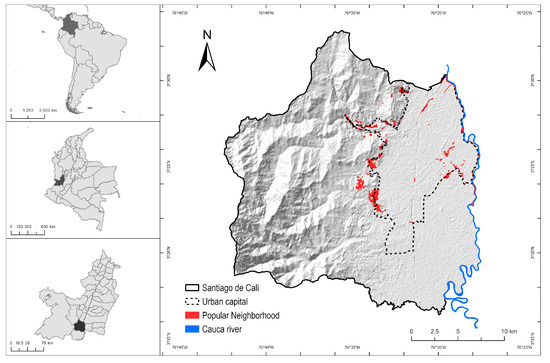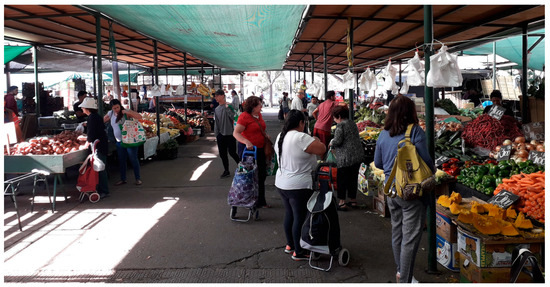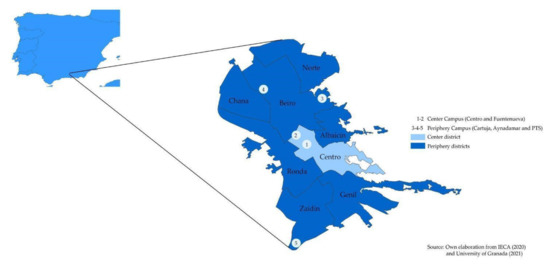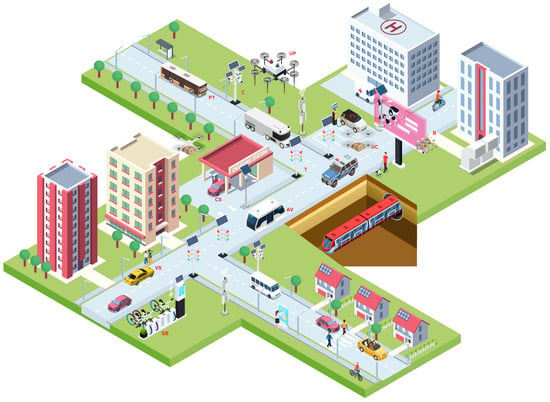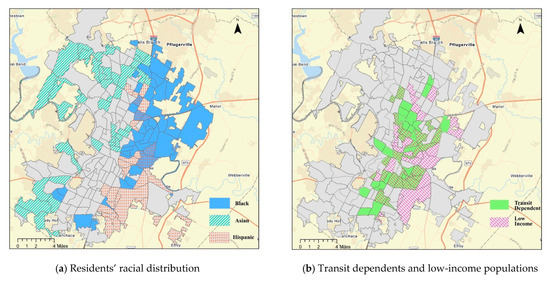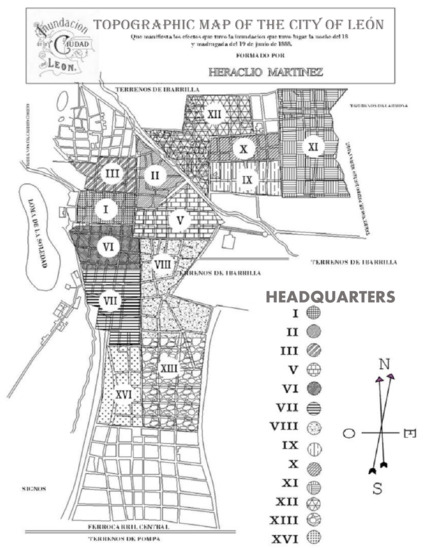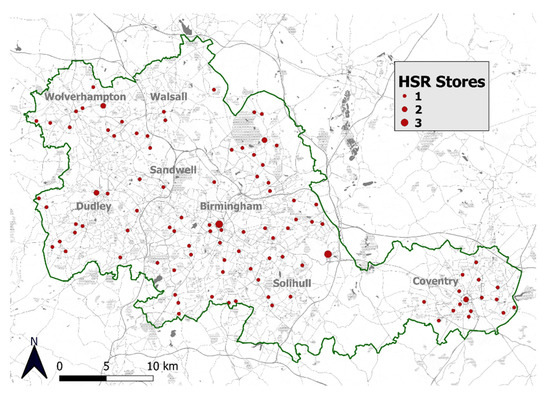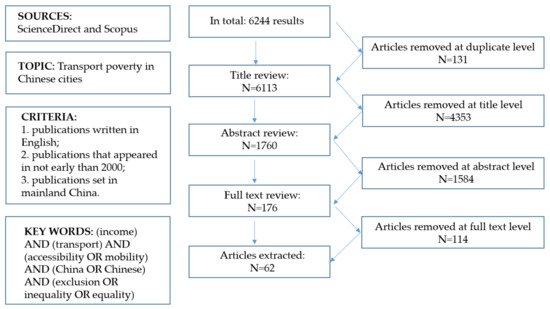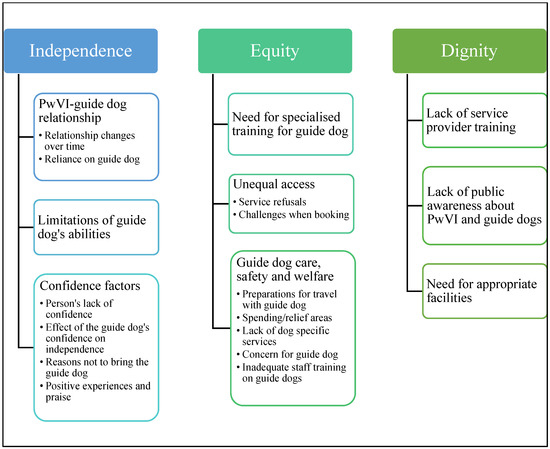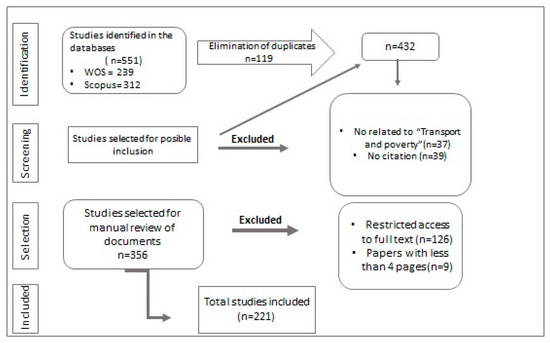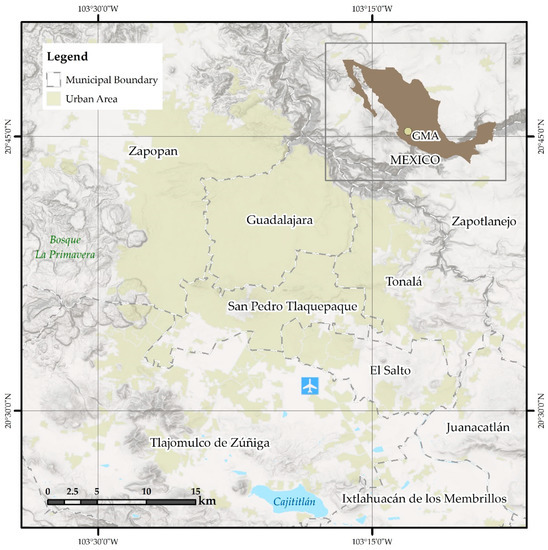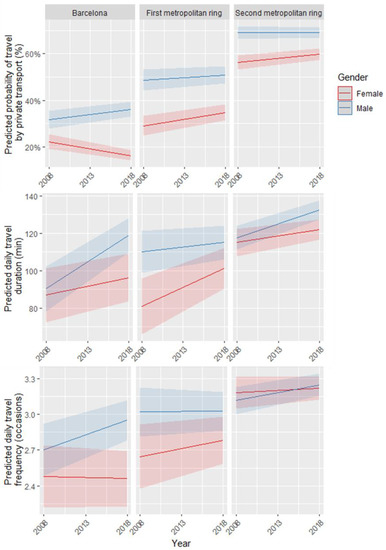Transport Inequalities, Transport Poverty and Sustainability
Share This Topical Collection
Editor
 Prof. Dr. Carmen Lizarraga
Prof. Dr. Carmen Lizarraga
 Prof. Dr. Carmen Lizarraga
Prof. Dr. Carmen Lizarraga
E-Mail
Website
Collection Editor
Department of Applied Economics, University of Granada, Faculty of Business and Economics, Campus Cartuja s/n, 18071 Granada, Spain
Interests: urban mobility; human development; sustainable development; transport inequalities; gender inequality
Special Issues, Collections and Topics in MDPI journals
Topical Collection Information
Dear Colleagues,
This Topical Collection of the journal Sustainability is related to the analysis of transport poverty and inequalities to deepen into the social side of sustainability. The papers to be included in this issue should reflect questions related to transport inequalities and transport poverty highlighting the relationship among transport provision, social exclusion and transport disadvantages. We welcome contributions discussing how transport disadvantage impacts, to a greater extent, particular groups that include the elderly, people with health problems, low-income groups, those living in conditions of poverty, the unemployed or disabled people. Proposed papers may show that transportation inequity also has economic consequences, since there can be individuals that spend an excessive amount of time or money travelling. This way, transport inequalities can result in different environmental impacts by gender, age or income level. At the same time, inadequate public transport facilities may hinder access for individuals to work, education, health care services and sociocultural activities. In another vein, papers that point out how dangerous, unsafe or unhealthy travel conditions for individuals can go against sustainability are also welcome.
Prof. Dr. Carmen Lizárraga
Collection Editor
Manuscript Submission Information
Manuscripts should be submitted online at www.mdpi.com by registering and logging in to this website. Once you are registered, click here to go to the submission form. Manuscripts can be submitted until the deadline. All submissions that pass pre-check are peer-reviewed. Accepted papers will be published continuously in the journal (as soon as accepted) and will be listed together on the collection website. Research articles, review articles as well as short communications are invited. For planned papers, a title and short abstract (about 100 words) can be sent to the Editorial Office for announcement on this website.
Submitted manuscripts should not have been published previously, nor be under consideration for publication elsewhere (except conference proceedings papers). All manuscripts are thoroughly refereed through a single-blind peer-review process. A guide for authors and other relevant information for submission of manuscripts is available on the Instructions for Authors page. Sustainability is an international peer-reviewed open access semimonthly journal published by MDPI.
Please visit the Instructions for Authors page before submitting a manuscript.
The Article Processing Charge (APC) for publication in this open access journal is 2400 CHF (Swiss Francs).
Submitted papers should be well formatted and use good English. Authors may use MDPI's
English editing service prior to publication or during author revisions.
Keywords
- Sustainable transportation
- Transport inequalities
- Transport poverty
- Social exclusion
- Sustainable mobility
Published Papers (13 papers)
Open AccessArticle
Social Inequality in Popular Neighborhoods: A Pre- and Post-Pandemic Perspective from Joint Accessibility
by
Jorge Gallego Méndez, Lina M. García-Moreno, Jackeline Murillo-Hoyos and Ciro Jaramillo Molina
Viewed by 1366
Abstract
The existence of barriers to accessing essential urban opportunities leads to differentiated use of the territory, which can generate social fragmentation. Several authors highlight the role of public transportation services for reducing inequality gaps by providing connections between origins and destinations. The COVID-19
[...] Read more.
The existence of barriers to accessing essential urban opportunities leads to differentiated use of the territory, which can generate social fragmentation. Several authors highlight the role of public transportation services for reducing inequality gaps by providing connections between origins and destinations. The COVID-19 health emergency in 2020 highlighted the complex situation faced by disadvantaged populations in coping with crises in the absence of transportation services. Considering four popular neighborhoods in Santiago de Cali, Colombia, as a case study, patterns of public transport provision, the potential for access to opportunities, and joint accessibility patterns for 2015 and 2021 were evaluated through methods based on spatial analysis. A decrease in public transport provision of approximately 25% and an increase in travel times close to 23 min were detected by 2021. The results show deficits in the provision of transportation services and low accessibility in the study area and reinforce the hypothesis raised about the existence of housing segregation and spatial inequality located on the city’s urban edge, which are marked in both scenarios.
Full article
►▼
Show Figures
Open AccessArticle
Elderly Walking Access to Street Markets in Chile: An Asset for Food Security in an Unequal Country
by
Giovanni Vecchio, Bryan Castillo, Rodrigo Villegas, Carolina Rojas Quezada, Stefan Steiniger and Juan Antonio Carrasco
Cited by 1 | Viewed by 1882
Abstract
Street markets can contribute to food security, since they are a source of fresh food and comparably inexpensive goods, being very relevant for low-income groups. Their relevance is even higher when considering older people, due to their often-constrained financial resources and possibilities to
[...] Read more.
Street markets can contribute to food security, since they are a source of fresh food and comparably inexpensive goods, being very relevant for low-income groups. Their relevance is even higher when considering older people, due to their often-constrained financial resources and possibilities to move. To assess the potential contribution of street markets to food security, this paper aims at evaluating to what extent older people have access to such a relevant asset. We consider the case of Chile, an ageing country with an unequal pension system, which makes it relevant for older people to access healthy and inexpensive food. We analyze what proportion of older people (i.e., people over 65) has walking access within 10 min to a street market—
feria libre—in each Chilean region, with particular detail in the country’s four major urban areas. We compare the resulting accessibility maps with census data to identify neighborhoods with higher proportions of older people and examine their socio-economic conditions. Our findings show that while street markets are less accessible to older people in comparison to the general population, the inhabitants who can access them belong mainly to low-income groups. The results provide relevant insights to develop neighborhood-based policies for spreading and strengthening street markets, especially in low-income areas with insufficient levels of access to other relevant urban opportunities.
Full article
►▼
Show Figures
Open AccessArticle
Marine Accidents in the Brazilian Amazon: The Problems and Challenges in the Initiatives for Their Prevention Focused on Passenger Ships
by
Jassiel V. H. Fontes, Paulo R. R. de Almeida, Harlysson W. S. Maia, Irving D. Hernández, Claudio A. Rodríguez, Rodolfo Silva, Edgar Mendoza, Paulo T. T. Esperança, Ricardo Almeida Sanches and Said Mounsif
Cited by 6 | Viewed by 4023
Abstract
The Brazilian Amazon is part of one of the largest river systems in the world, in which the transport of cargo and passengers is commonplace. However, several accidents still occur to passenger ships, causing fatalities. Transportation occurs commonly in remote regions, where there
[...] Read more.
The Brazilian Amazon is part of one of the largest river systems in the world, in which the transport of cargo and passengers is commonplace. However, several accidents still occur to passenger ships, causing fatalities. Transportation occurs commonly in remote regions, where there are transport inequalities, and emergency assistance is hard to find. This can affect sustainability in communities with considerable levels of economic and social vulnerability. More information is needed about accidents involving inland transport in the Amazon, to identify the threats to ships and propose strategies for accident prevention. This paper addresses the main problems that long-distance passenger ships face in the Brazilian Amazon, presenting an integrated framework towards accident prevention. First, the present situation is characterized in terms of ship description, spatial distribution, and regulations that are applicable. Next, possible causes of passenger ship accidents are discussed, including topics of concern that should be considered in the Amazon waterways. Finally, measures to help minimize passenger ship accidents are proposed, and the social relevance is discussed. It was found that accidents in the Amazon are due to a combination of human and environmental factors. Stakeholders should strengthen the technical and legal training of ship operators. The use of new technologies for navigational aid and necessary maintenance of ships is suggested. Marine accident prevention initiatives should consider local conditions, such as environmental preservation, cultural respect, and difficulties related to navigation through the complex riverine system of the Amazon region.
Full article
►▼
Show Figures
Open AccessEditor’s ChoiceArticle
Do University Students’ Security Perceptions Influence Their Walking Preferences and Their Walking Activity? A Case Study of Granada (Spain)
by
Carmen Lizárraga, Cathaysa Martín-Blanco, Isabel Castillo-Pérez and Jorge Chica-Olmo
Cited by 7 | Viewed by 2283
Abstract
A sustainable city must be a safe place for its inhabitants when walking, with the absence of fear of crime being one of its main attributes. Although perceived insecurity is one of the main deterrents of walking activity, this relationship requires some clarification
[...] Read more.
A sustainable city must be a safe place for its inhabitants when walking, with the absence of fear of crime being one of its main attributes. Although perceived insecurity is one of the main deterrents of walking activity, this relationship requires some clarification in environments which are walkable and safe, with low crime rates. This article contributes to the evidence for the influence of perceived security on walking activity and, as a novel aspect, also analyzes the effects of perceived security on walking as the preferred travel mode. In order to study this relationship, we use a method that combines non-linear principal component analysis (NLPCA) and a logit model (LM). The data are taken from a survey of university students carried out in the city of Granada. Results show that gender and perceived security have a greater effect on the choice of walking as the preferred travel mode, while location factors have significantly more weight in the explanation of the choice of walking as the most usual travel mode. These findings may be extended to other urban areas and can be of use for the implementation of urban policies aimed at designing the built environment to develop more sustainable cities.
Full article
►▼
Show Figures
Open AccessArticle
Transport Inequalities and the Adoption of Intelligent Transportation Systems in Africa: A Research Landscape
by
Olasupo O. Ajayi, Antoine B. Bagula, Hloniphani C. Maluleke and Isaac A. Odun-Ayo
Cited by 3 | Viewed by 4954
Abstract
Intelligent Transportation Systems (ITS), also known as Smart Transportation, is an infusion of information and communication technologies into transportation. ITS are a key component of smart cities, which have seen rapid global development in the last few decades. This has in turn translated
[...] Read more.
Intelligent Transportation Systems (ITS), also known as Smart Transportation, is an infusion of information and communication technologies into transportation. ITS are a key component of smart cities, which have seen rapid global development in the last few decades. This has in turn translated to an increase in the deployment and adoption of ITS, particularly in countries in the Western world. Unfortunately, this is not the case with the developing countries of Africa and Asia, where dilapidated road infrastructure, poorly maintained public/mass transit vehicles and poverty are major concerns. However, the impact of Westernization and “imported technologies” cannot be overlooked; thus, despite the aforementioned challenges, ITS have found their way into African cities. In this paper, a systematic review was performed to determine the state of the art of ITS in Africa. The output of this systematic review was then fed into a hybrid multi-criteria model to analyse the research landscape, identify connections between published works and reveal research gaps and inequalities in African ITS. African peculiarities inhibiting the widespread implementation of ITS were then discussed, followed by the development of a conceptual architecture for an integrated ITS for African cities.
Full article
►▼
Show Figures
Open AccessArticle
Towards Equity in Micromobility: Spatial Analysis of Access to Bikes and Scooters amongst Disadvantaged Populations
by
Javad J. C. Aman, Myriam Zakhem and Janille Smith-Colin
Cited by 22 | Viewed by 3957
Abstract
In recent years, cities around the world have launched various micromobility programs to offer more convenient and efficient mobility options that make transit networks more accessible. However, the question of whether micromobility services are accessible to and equitably distributed amongst all populations still
[...] Read more.
In recent years, cities around the world have launched various micromobility programs to offer more convenient and efficient mobility options that make transit networks more accessible. However, the question of whether micromobility services are accessible to and equitably distributed amongst all populations still remains unanswered. In this study, we investigate the spatial accessibility of disadvantaged communities, such as racial and ethnic minorities, low-income populations, and transit-dependent populations, to scooter and bike services. The ultimate goal of this study is to examine associations between the level of access to bikes and scooters and the racial and social characteristics of communities throughout the City of Austin, Texas. To achieve this goal, first, equity analysis with a Lorenz curve was performed to understand how bike and scooter accessibility is distributed among the population. Then, both Ordinary Least Squares (OLS) and Geographically Weighted Regression (GWR) models were generated to explore factors associated with bike and scooter accessibility. The analysis of the residuals showed more consistent results in the GWR models than in the OLS models. The equity analysis with the Lorenz curve conducted herein reveals extreme inequity in access to micromobility services. Almost 80 percent of residents have no access to bikes and scooters. Access is even worse for transit-dependent people when compared to the general population. The regression models further revealed that areas with a higher proportion of Black residents were less likely to have access to both bikes and scooters, yet positive associations were found for both bike and scooter accessibility and low-income populations. Increased understanding of spatial access to bikes and scooters can support ongoing efforts to deliver equitable transportation systems, improve transportation alternatives for disadvantaged populations, and support future policy actions related to bike and scooter services.
Full article
►▼
Show Figures
Open AccessArticle
Sustainable Public Transport Service Adapted for People with Disabilities and Reduced Mobility in the Municipality of León, Guanajuato, Mexico
by
Fabiola Colmenero-Fonseca, Carlos Daigoro Fonce-Segura, Alejandro Guzmán-Ramírez and Mariana Flores-García
Cited by 3 | Viewed by 3125
Abstract
Urban mobility makes it possible to incorporate new perspectives that make it possible to question and problematize the way in which social links and relations between city dwellers are shaped. In this way, mobility constitutes an increasingly massive, recurrent, and complex social practice,
[...] Read more.
Urban mobility makes it possible to incorporate new perspectives that make it possible to question and problematize the way in which social links and relations between city dwellers are shaped. In this way, mobility constitutes an increasingly massive, recurrent, and complex social practice, strongly conditioned by the existing levels of inequality and particularly those that entail processes of social exclusion. In the present research, the efficiency of the modality of adapted public transportation for people with disabilities in the city of León, Guanajuato, Mexico, which came into operation in 2012, receiving the 2019 Building Equality Award from the International Center for the Promotion of Human Rights and United Nations Educational, Scientific and Cultural Organization (UNESCO), is analyzed. The management, design, and implementation of Inclusive Urban Transportation (TÜI), demonstrated how the articulation of actors (public, private, and civil society) are of vital importance for the success of the project. In this sense, it is important to count on the permanent participation of focus groups that identify and understand the real needs of users with reduced mobility. The results achieved allow establishing an evaluation that contributes to detect and mitigate the conditions of vulnerability, risk, and segregation of people with disabilities.
Full article
►▼
Show Figures
Open AccessArticle
Linking Loyalty Card Data to Public Transport Data to Explore Mobility and Social Exclusion in the Older Population
by
Ffion Carney
Cited by 1 | Viewed by 1970
Abstract
Inequalities in the provision of public transport and the accessibility of both public transport services and key facilities can impact wellbeing and increase social exclusion. This study explores the relationship between the provision of public transport services, mobility and social exclusion by utilising
[...] Read more.
Inequalities in the provision of public transport and the accessibility of both public transport services and key facilities can impact wellbeing and increase social exclusion. This study explores the relationship between the provision of public transport services, mobility and social exclusion by utilising loyalty card transaction data to estimate the activity spaces of the older population in the West Midlands (England) metropolitan area. Bus time table data were used to calculate bus service provision and travel times to retail areas. Regression analyses were then used to quantify the impacts that the provision and efficiency of public transport services have on the area of older cardholders’ activity spaces. The provision of public transport services was found to have a significant impact on the size of these activity spaces, along with several sociodemographic variables, including age, deprivation and health. The results suggested that access to reliable public transport increased the mobility levels of the older population and allowed for a wider range of retail opportunities to be accessed. Inequalities in the provision of public transport could therefore exacerbate the wider social issues that affect some of the most vulnerable groups of the population.
Full article
►▼
Show Figures
Open AccessReview
Transport Poverty in Chinese Cities: A Systematic Literature Review
by
Weichang Kong, Dorina Pojani, Neil Sipe and Dominic Stead
Cited by 5 | Viewed by 2929
Abstract
The widening income gap in post-reform China has given rise to social inequality. Among those, transport poverty and inequality have significantly affected the daily life of low-income groups. While important, this is an under-researched topic in China. This gap in the academic literature
[...] Read more.
The widening income gap in post-reform China has given rise to social inequality. Among those, transport poverty and inequality have significantly affected the daily life of low-income groups. While important, this is an under-researched topic in China. This gap in the academic literature is glaring given the country’s urbanization rates, sprawling cities and income differentials. Most previous studies have only focused on two aspects of transport poverty—job-housing imbalance and accessibility. A comprehensive understanding of the causes and impacts of transport inequality is currently lacking. Therefore, a systematic review of academic literature based on keywords relevant to transport poverty in China was conducted to provide a more complete assessment of the situation in Chinese cities. In total, 62 relevant studies were identified after close examination of the articles (including titles, abstracts, and full-texts). This set of articles allowed a number of general patterns to be identified. It was found that the most common causes of transport poverty include: a lack of access to private vehicles; uneven access to alternative transport options; inadequate public transport provision; jobs-housing imbalance; and the
hukou system (a system of household registration which aims to regulate population distribution and rural-to-urban migration). The main impacts of transport poverty include: curtailed mobility and longer travel times; higher household expenditures on travel; reduced access to jobs and essential services; higher household expenditures on travel; and health and environmental issues.
Full article
►▼
Show Figures
Open AccessArticle
Travelling with a Guide Dog: Experiences of People with Vision Impairment
by
Jillian M. Rickly, Nigel Halpern, Marcus Hansen and John Welsman
Cited by 11 | Viewed by 5764
Abstract
There is considerable research on people with vision impairment (PwVI) in the transport, travel and tourism sectors, which highlights the significance of real-time information and consistency in services to accessibility. Based on interviews with guide dog owners in the United Kingdom, this paper
[...] Read more.
There is considerable research on people with vision impairment (PwVI) in the transport, travel and tourism sectors, which highlights the significance of real-time information and consistency in services to accessibility. Based on interviews with guide dog owners in the United Kingdom, this paper contributes an additional dimension to our understanding of transport accessibility for PwVI by focusing specifically on guide dog owners’ experiences in the travel and tourism sector. A guide dog is more than a mobility tool, but a human–dog partnership that improves the quality of life for PwVI; however, it also introduces constraints related to the dog’s welfare and safety. Further, lack of understanding of guide dog owners’ rights to reasonable accommodation leads to discrimination through service refusals and challenges to service access. This paper concludes that the limited and inconsistent public knowledge of disability diversity has serious ramifications for transport accessibility and suggests specific industry and legislative interventions in response.
Full article
►▼
Show Figures
Open AccessReview
Transport Poverty with Special Reference to Sustainability: A Systematic Review of the Literature
by
María del Carmen Pérez-Peña, Mercedes Jiménez-García, José Ruiz-Chico and Antonio Rafael Peña-Sánchez
Cited by 10 | Viewed by 3017
Abstract
The aim of this work is to analyse the state of the art of scientific research related to transport poverty with special reference to sustainability and to identify new research needs. To this end, a methodology has been used in line with the
[...] Read more.
The aim of this work is to analyse the state of the art of scientific research related to transport poverty with special reference to sustainability and to identify new research needs. To this end, a methodology has been used in line with the objective set out, choosing the systematic review of the literature as the most suitable method. The results show that transport poverty is an under-exploited issue and is not well articulated by researchers, and there are great differences between the different areas of knowledge studied. The subjects related to health and medicine have more publications, almost 58%, with the rest distributed among 11 different subjects. Of the works analysed, only 26.69% refer to the topic of sustainability, and therefore this is a branch which is little studied in the literature in this field. Another relevant finding is that all the articles analysed highlight the vulnerability and inequality of the groups affected by transport poverty, with the elderly being the least studied in the research work.
Full article
►▼
Show Figures
Open AccessArticle
(In)Equitable Accessibility to Sustainable Transport from Universities in the Guadalajara Metropolitan Area, Mexico
by
Hugo de Alba-Martínez, Alejandro L. Grindlay and Gabriela Ochoa-Covarrubias
Cited by 6 | Viewed by 2824
Abstract
The equitable accessibility to higher education favours social fairness in economic opportunities. This paper provides an empirical approach to the assessment of the (in)equity of accessibility from universities to sustainable transport modes: Light Rail Transit, Bus Rapid Transit, buses, and bicycle infrastructure in
[...] Read more.
The equitable accessibility to higher education favours social fairness in economic opportunities. This paper provides an empirical approach to the assessment of the (in)equity of accessibility from universities to sustainable transport modes: Light Rail Transit, Bus Rapid Transit, buses, and bicycle infrastructure in the Guadalajara Metropolitan Area (Mexico). In particular, the study designed and calculated an Access to Sustainable Transport from University Index by combining governmental and crowdsourced Open Access Data. It used spatial analysis techniques within a Geographic Information Systems environment, and multivariate statistical methods such as Principal Component Analysis and Cluster Analysis. The findings highlight the weakness in the accessibility to sustainable transport modes from the universities in the Metropolitan Area. Furthermore, this study revealed an unfavourable bias in the location of sustainable transport stations/stops in the vicinity of public universities. The results provide a methodology and empirical evidence for transport policy makers to reduce inequalities and therefore transport-related social exclusion in this under-represented, but socially relevant, student community.
Full article
►▼
Show Figures
Open AccessArticle
Gender and Age Differences in Metropolitan Car Use. Recent Gender Gap Trends in Private Transport
by
Jerònia Cubells, Oriol Marquet and Carme Miralles-Guasch
Cited by 13 | Viewed by 3264
Abstract
Urban mobility is currently undergoing significant changes in cities worldwide, as gendered mobilities are converging and automobility is on a downward trend among younger cohorts. The aim of this study was to examine the dynamics of gendered mobilities over generations and across three
[...] Read more.
Urban mobility is currently undergoing significant changes in cities worldwide, as gendered mobilities are converging and automobility is on a downward trend among younger cohorts. The aim of this study was to examine the dynamics of gendered mobilities over generations and across three different urban contexts in the Barcelona Metropolitan Region (northeast Spain), in an effort to understand whether the mobility gender gap is closing and whether young adults have lowered their private transport levels. Generalized linear models were built to analyze travel survey data from the Working Day Mobility Survey (EMEF) to comprehend mobility changes between 2008 and 2018. The study identified a generational countertrend among new generations of young adults, who reported more sustainable mobility practices than their predecessors. Furthermore, results show a general trend towards gender convergence of travel behavior on the outskirts of the Barcelona Metropolitan Region, but also a tendency towards gender divergence in the core area of Barcelona City. Since the mobility gender gap is closer to convergence in those areas where private transport use is more widespread, future efforts towards achieving climate objectives should aim at decoupling such gender convergence from car-dependent built environments.
Full article
►▼
Show Figures





